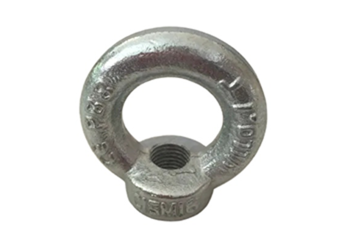nov . 16, 2024 20:00 Back to list
Marine Equipment for Rigging and Hardware Solutions in Nautical Applications
The Importance of Marine Rigging Hardware
Marine rigging hardware plays a vital role in the safety and efficiency of various maritime operations. Whether it’s on a sailing yacht, a commercial fishing vessel, or a cargo ship, the rigging system is essential for controlling the sails, securing loads, and ensuring overall vessel stability. In this article, we’ll explore the different types of marine rigging hardware and its significance in the maritime industry.
At its core, marine rigging hardware includes components such as blocks, shackles, turnbuckles, and terminals. These items are designed to withstand harsh marine environments, which can be particularly demanding due to factors like saltwater corrosion, high winds, and rough seas. As such, high-quality materials such as stainless steel and aluminum are commonly used, providing strength, durability, and resistance to rust.
One of the most critical components of rigging hardware is the block, which serves as a pulley system to change the direction of force applied to a rope or cable. Blocks come in various sizes and configurations, suitable for different applications. For example, a simple single block is often used on smaller vessels, while larger ships may require a complex system of multiple blocks for better load management.
Shackles are another integral part of marine rigging. They are used to connect two components of a rigging system, such as join a rope to a sail or connect a chain to an anchor. Depending on the application, there are different types of shackles available, including D-shackles and bow shackles, each with specific load-bearing capacities. The safe working load of a shackle must always be considered to prevent failure during operation.
marine rigging hardware

Turnbuckles are essential for adjusting tension in rigging systems, such as in stays and shrouds that hold up a mast. These devices allow for fine adjustments, ensuring that the rigging remains taut, which is crucial for maintaining the structural integrity of the vessel. A well-adjusted turnbuckle contributes to optimal performance, especially in changing environmental conditions.
Another common element in marine rigging hardware is the terminal, which is used to connect cable ends or to attach a cable to another component. There are numerous types of terminals, including swages, screws, and forks, each suited for different purposes. Proper selection and installation of terminals are essential to prevent accidents and ensure the efficiency of the rigging system.
The importance of regular inspection and maintenance of marine rigging hardware cannot be overstated. Corrosion, wear and tear, and other forms of damage can severely compromise marine rigging systems. Owners and operators must adopt proactive measures to ensure that all components are in good condition and replaced when necessary.
In conclusion, marine rigging hardware is indispensable in the maritime industry, impacting safety and operational effectiveness. With various components like blocks, shackles, turnbuckles, and terminals, understanding their functions and maintenance can greatly enhance the performance of any vessel. Investing in high-quality rigging hardware and conducting regular inspections ensures the longevity and safety of maritime operations, allowing sailors to navigate the seas with confidence.
-
The Ubiquitous Reach of DIN934 in Application Realms
NewsMay.16,2025
-
Exploring Different Bolt Types
NewsMay.16,2025
-
Cracking the Code of Sleeve Anchor Mastery
NewsMay.16,2025
-
Clamp Design Principles,Types and Innovations
NewsMay.16,2025
-
Artistry Inspired by the Humble Anchor Bolt
NewsMay.16,2025
-
A Deep Dive into Screw Types
NewsMay.16,2025


